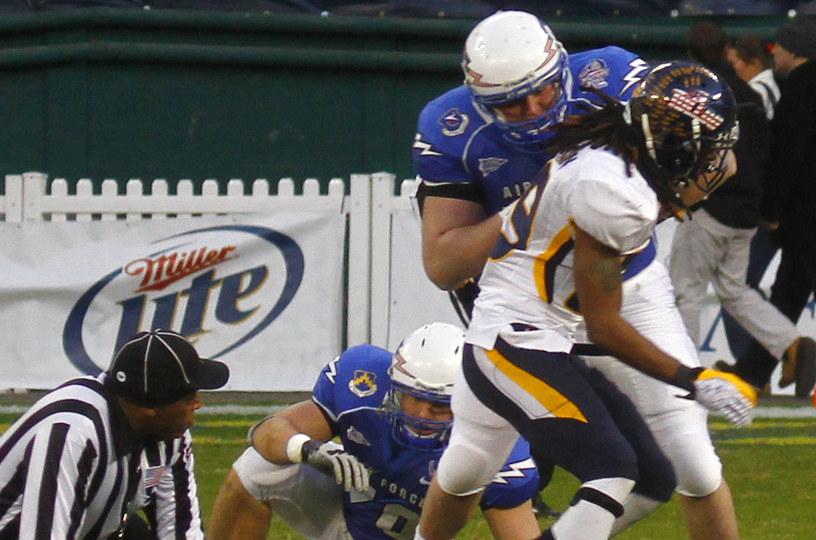•
Written By
Written By
•
•
•
Loading article...
Written By
Written By
The Military Bowl nearly had access to all three Service Academies, but the Mountain West out maneuvered the AAC, keeping Air Force away from the bowl.
Written By
Omar-Rashon Borja
Senior Writer, Editor, Historian
Written By
Omar-Rashon Borja
Senior Writer, Editor, Historian

The 2011 Military Bowl was arguably one of the most thrilling bowls ever. The offenses of the Toledo Rockets and Air Force Falcons took flight, combining for 83 points and over 700 yards. After Toledo took a 42-35 lead with five minutes left, Air Force responded with a touchdown with under a minute left. The Falcons went for the win with a fake PAT attempt but failed, giving the Rockets a 42-41 win. Sadly, this may be the only time Air Force plays in the aptly named Military Bowl.
The American Athletic Conference recently courted Air Force at the height of the Mountain West/PAC-? realignment war. Ultimately, Mountain West commissioner Gloria Nevarez enticed Air Force to stay by promising the Falcons and UNLV a 24.5% share of the exit fees of the five departed members.
The Military Bowl likely watched the conference realignment drama with bated breath. The bowl game recently benefited from another Service Academy conference move when Army joined the AAC as a football-only member this year. Army had previous tie-ins with the Military Bowl in 2009 and 2012 but went 5-7 in 2009 and 2-10 three years later, missing the bowl on both occasions.
The Military Bowl’s agreement with the AAC and ACC from 2014 to the present day and the fact ESPN does not own it, preventing flexibility and “under-the-table” agreements, shut Army out of the Military Bowl until this year. Air Force was in the same predicament and remained there by staying in the Mountain West
Furthermore, the lack of Northeastern teams and the advent of Boston’s Fenway Bowl limited the Military Bowl’s pool of favorable AAC teams to Army, Navy, Temple, East Carolina, and Charlotte. Navy, Temple, East Carolina, and Charlotte have all recently struggled to reach bowl eligibility consistently, forcing the Military Bowl to select the AAC’s more southern teams with mixed results.
With over 125,000 active duty military personnel residing in Maryland, Virginia, and Washington D.C., Air Force would have been an attractive team for the Military Bowl.While the Falcons play in Maryland every other year against Navy, they rarely go east of the Mississippi River for bowl games due to the Mountain West’s practical ties to Western Bowl games.
An Air Force game against an ACC school would have been a rare event for the program. Except for Cal, Stanford, and SMU, Air Force has only five meetings against current ACC members since 1980, four of which came in bowls.
Unfortunately, Air Force stayed in the Mountain West. The Falcons win by staying in a geographically beneficial conference. However, they lose an enticing bowl opportunity in the process. The Military Bowl still has Army and Navy, but they almost had it all with Air Force’s near-exit from the Mountain West.
Mountain West’s 7 schools - Air Force, Hawaii, New Mexico, Nevada, San Jose State, UNLV & Wyoming - sign MOU to remain in league & execute Grant of Media Rights from July 1, 2026 to June 30, 2032 Revenue split: Air Force, UNLV 24.5% Nevada, UNM, SJSU, Wyoming 11.5% Hawaiʻi 5%